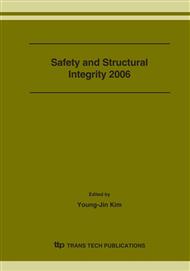p.103
p.113
p.119
p.129
p.135
p.141
p.147
p.157
p.163
Studies on a High-Temperature Air Combustion Burner for a Compact Fuel-Cell Reformer
Abstract:
A new burner configuration for a compact fuel-cell reformer with a high-temperature air combustion concept was studied. The burner was computationally designed for a 40 Nm3/hr hydrogen-generating reformer using natural gas-steam reforming method. In order to satisfy the primary requirements for designing a reformer burner (uniform distribution of temperature along the fuel processor walls and minimum heat losses from the reformer), the features of the present burner configuration included 1) a self-regenerative burner for an exhaust-gas-recirculation to apply for the high-temperature air combustion concept, and 2) an annular-type shield for protecting direct contact of flame with the processor walls. For the present design conditions, the predicted temperature distributions along the processor walls were found uniform within 100 K variation. Thus, the present burner configuration satisfied the requirement for reducing temperature gradients along the processor walls, and consequently demonstrated that the high-temperature air combustion concept could be applied to the practical fuel reformers for use of fuel cells. The predicted uniform temperature distributions along the processor walls were experimentally demonstrated for a test burner.
Info:
Periodical:
Pages:
135-140
Citation:
Online since:
February 2007
Authors:
Price:
Сopyright:
© 2007 Trans Tech Publications Ltd. All Rights Reserved
Share:
Citation:


